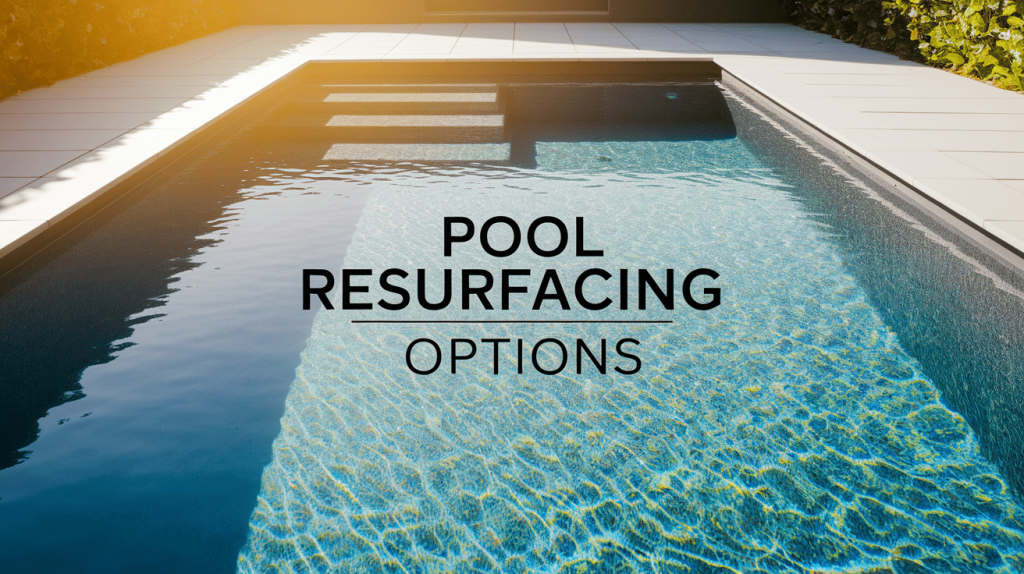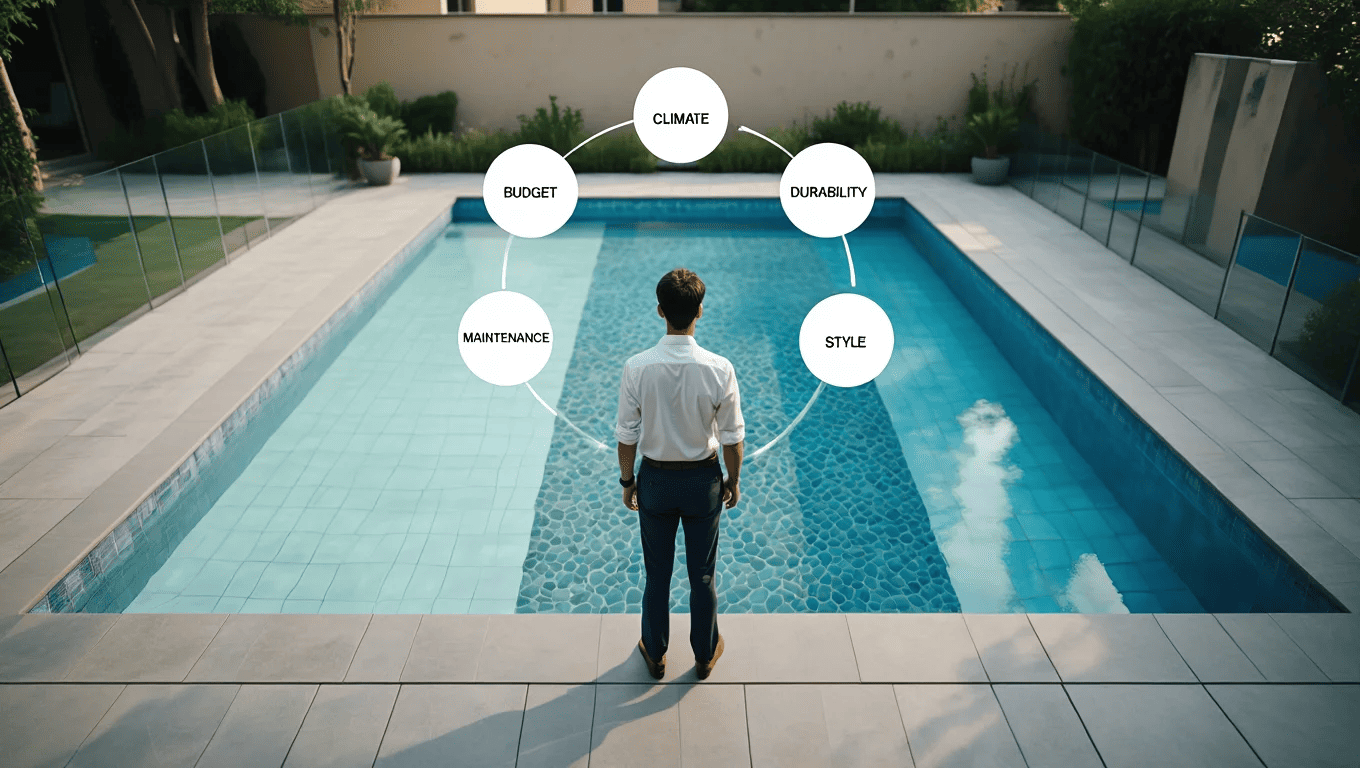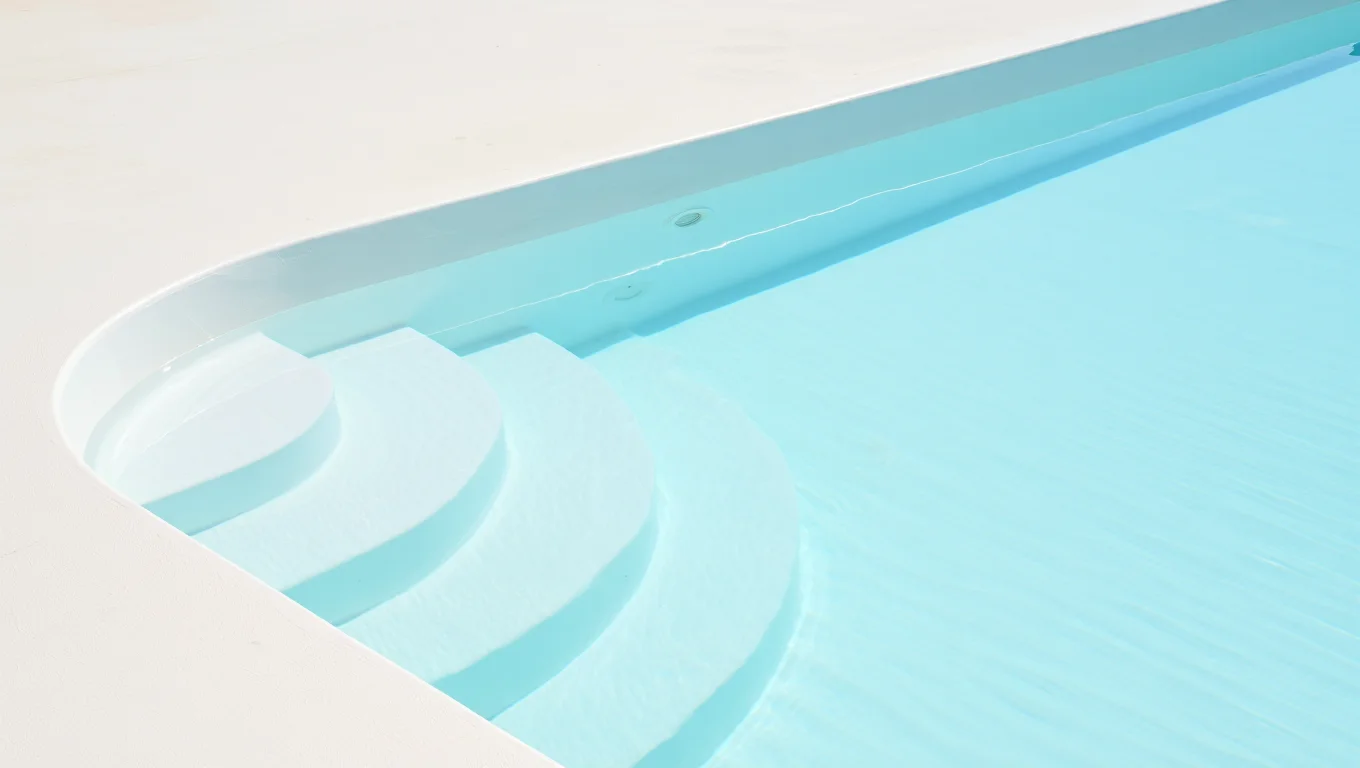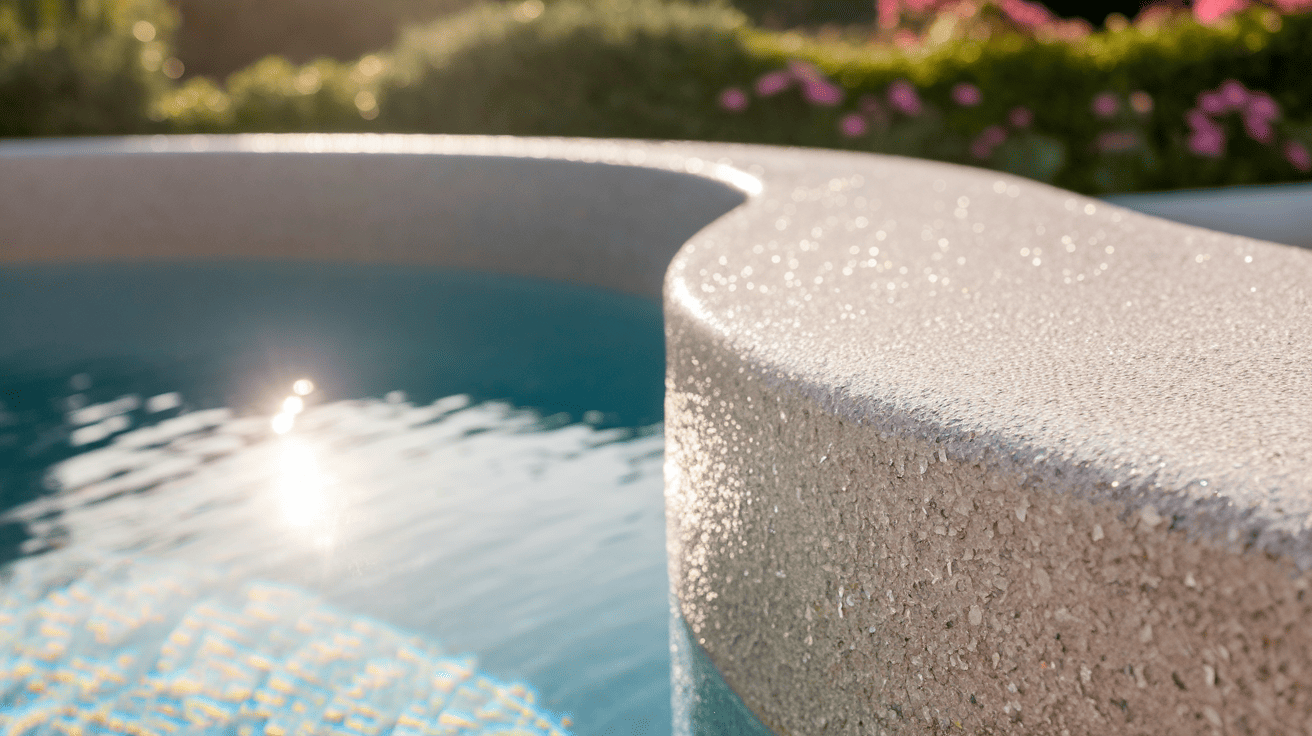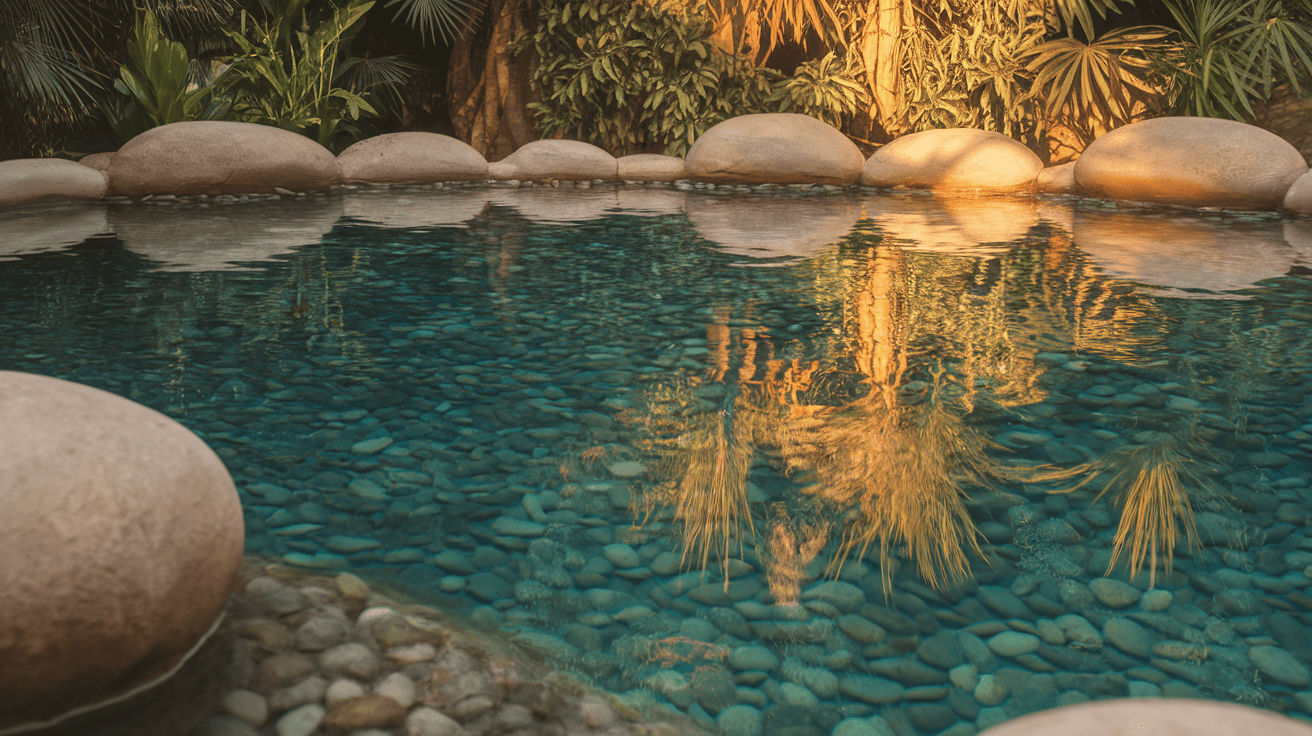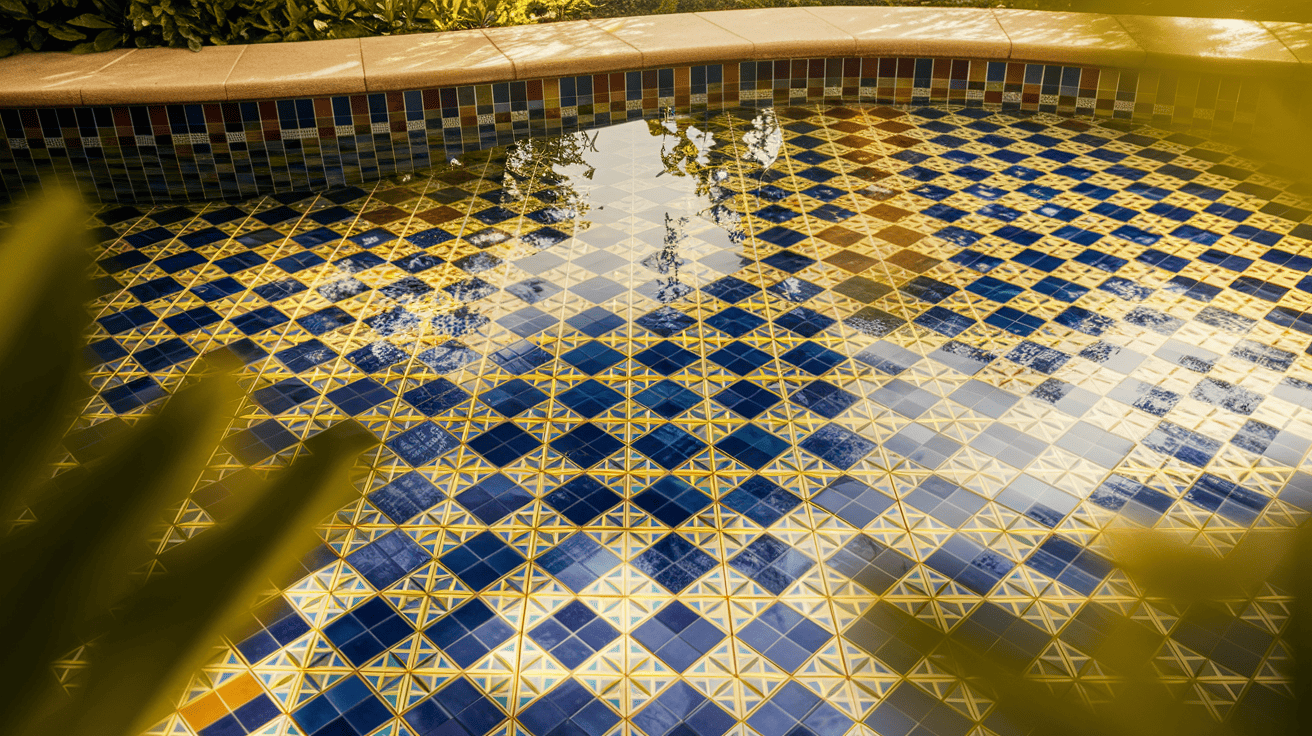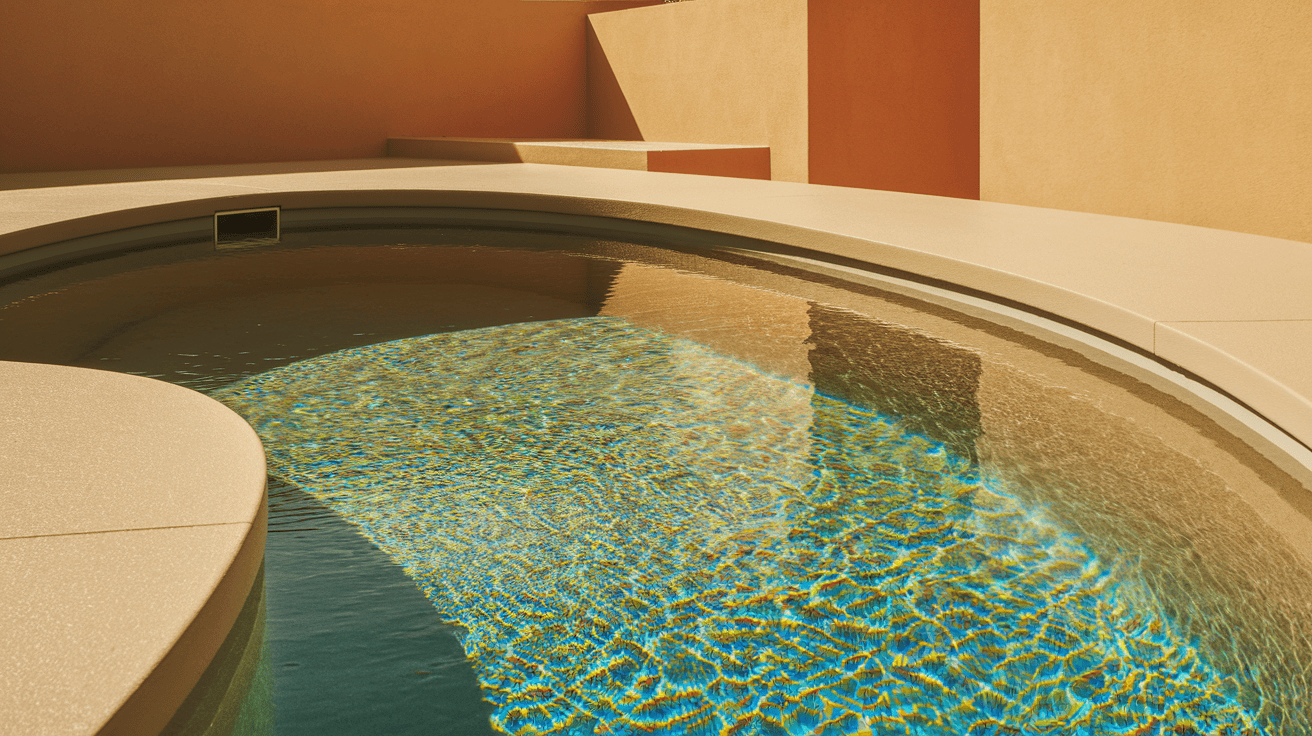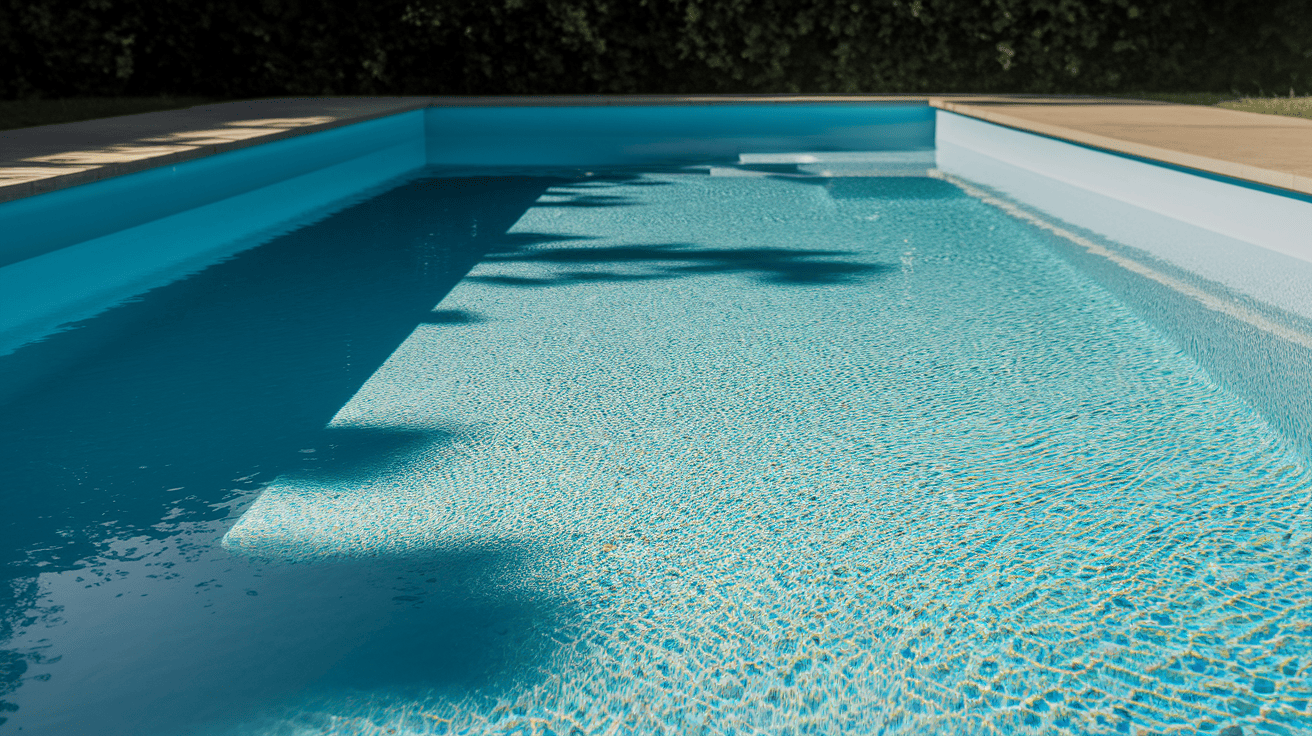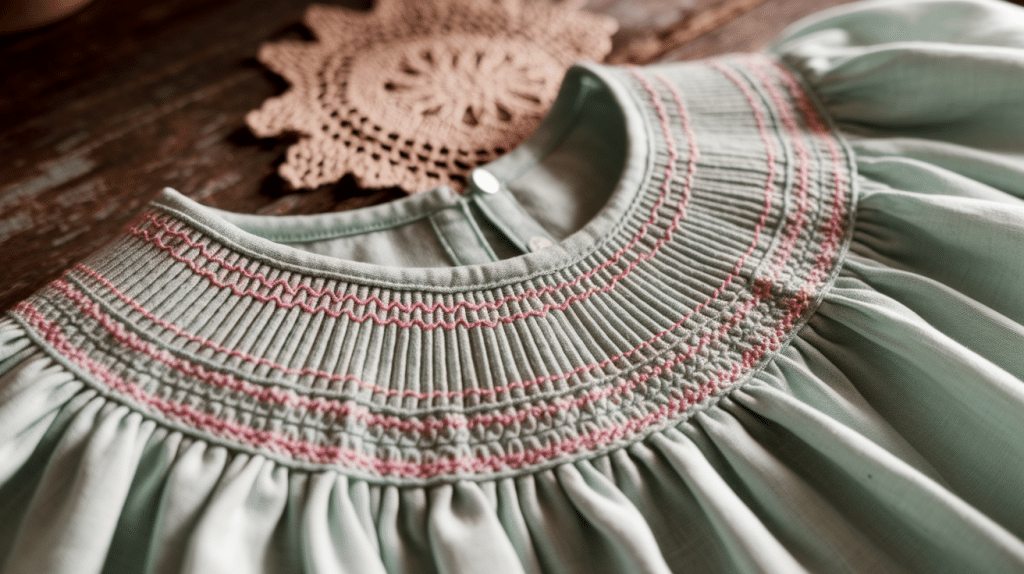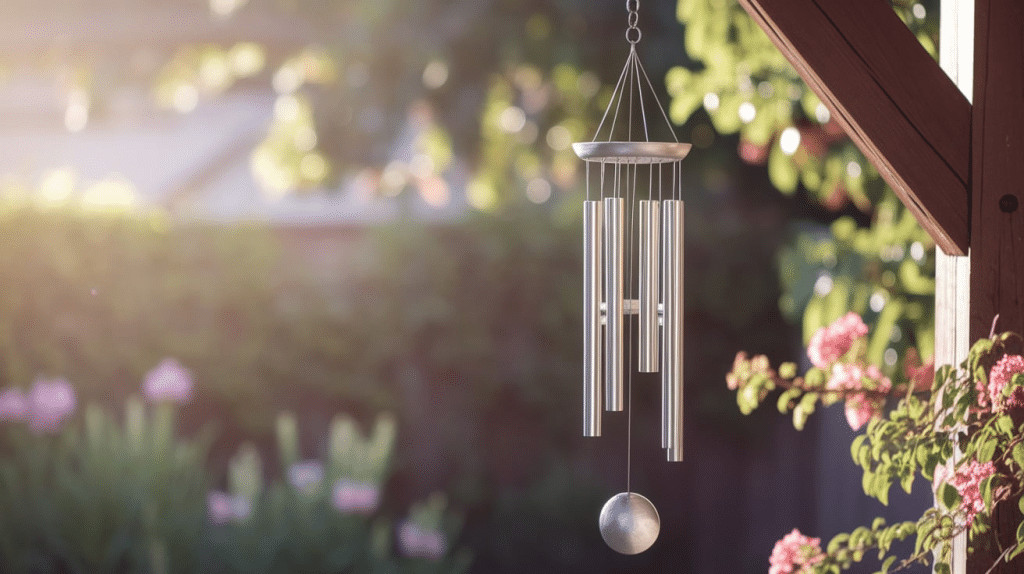Is your once-sparkling pool now showing signs of wear and tear? Those cracks, stains, and rough patches aren’t just unsightly—they can damage your pool’s structure and even pose safety risks.
Pool resurfacing breathes new life into aging swimming pools, changing them from eyesores into backyard showcases.
With numerous material options available today, homeowners can select surfaces that align with their visual preferences, maintenance habits, and budget constraints.
From traditional plaster to luxurious tile and modern aggregate finishes, each option offers distinct advantages. Understanding these differences helps you make an informed decision that balances appearance, durability, comfort, and cost.
Exploring pool resurfacing options now can save you thousands in repairs later, while giving your outdoor space a fresh and inviting appeal.
Why Resurface Your Pool?
Pool resurfacing is an essential maintenance task for homeowners. Over time, pool surfaces develop cracks, stains, and rough patches. These issues look unappealing and can pose safety risks.
Resurfacing your pool significantly extends its lifespan. This prevents costly structural repairs in the future. A smooth, updated surface eliminates rough spots that might scrape swimmers’ feet.
It makes the pool more comfortable to use. A freshly resurfaced pool can dramatically enhance the visual appeal of your backyard.
It changes an old, worn-out pool into a sparkling centerpiece for outdoor entertaining. This improvement can substantially increase your property’s market value.
Resurfacing is a smart investment if you plan to sell your home or want to enjoy a better swimming experience. The benefits make it worth considering for any pool owner.
Factors to Consider Before Choosing a Resurfacing Option
Selecting the right pool resurfacing option can feel overwhelming with so many choices available. Taking time to evaluate several key factors will help you make an informed decision that meets your specific needs.
- Before selecting a pool resurfacing option, it is essential to identify your pool type, as concrete, fiberglass, and vinyl pools each require different resurfacing approaches.
- Your local climate plays a crucial role in determining suitable materials, as extreme temperatures or exposure to saltwater can significantly impact the durability of materials.
- Budget considerations are crucial, as resurfacing costs vary significantly depending on the material and installation method.
- Expected longevity should factor into your decision, as some materials last 5-7 years, while others can endure for 15-20 years.
- Maintenance requirements vary between surfaces, with some requiring regular cleaning while others are more resistant to staining and algae growth.
- Your visual preferences matter greatly, as resurfacing options offer a variety of textures, colors, and finishes that define your pool’s overall look and feel.
Making the right choice now will save you time, money, and frustration in the future. A well-chosen resurfacing option enhances both the functionality and aesthetic appeal of your pool.
Pool Resurfacing Options
Selecting the right pool surface is crucial for both function and appearance. Different materials offer varying benefits in terms of durability, maintenance, and feel. Consider your specific needs and preferences when choosing from these popular options.
1. Plaster (White or Colored Marcite)
Plaster is the traditional pool surface made from a mixture of cement, marble dust, and pigments. The application involves spreading this mixture onto the pool shell to create a smooth, uniform finish.
When completed, plaster delivers that classic, clean swimming pool look many homeowners desire. While plaster offers an affordable option with a timeless appearance, it typically lasts only 7-10 years before showing wear. This surface can develop stains from chemicals and algae, especially if water chemistry isn’t carefully maintained.
2. Quartz Aggregate Finish
Quartz aggregate combines cement with crushed quartz particles to create a more resilient surface than standard plaster. During installation, the quartz crystals become exposed, giving the pool a slightly textured, sparkly appearance.
This finish resists staining much better than traditional plaster and holds up well against chemicals and UV exposure.
Available in various colors, quartz finishes typically last 10 to 15 years before needing replacement. However, the installation is more complex and requires the expertise of experienced professionals.
3. Pebble Finish
Pebble finishes incorporate small, smooth river pebbles into cement, creating a natural, textured surface. After application, the top layer is acid-washed to expose the pebbles, resulting in a distinctive feel and appearance.
This finish is exceptionally durable, often lasting 15-20 years or more, and resists staining and chemical damage. The natural look works particularly well for pools designed with organic shapes or tropical themes. The main drawback is the textured surface, which some swimmers find too rough on their feet.
4. Tile (Ceramic, Porcelain, Glass)
Tile offers unmatched durability and luxury for pool surfaces. Homeowners can choose between waterline-only tiling or covering the entire pool surface with ceramic, porcelain, or glass tiles in a wide range of colors and patterns.
Properly installed tile can last decades without deterioration, resists staining, and is exceptionally easy to clean. The smooth surface feels pleasant underfoot and provides unlimited design possibilities.
The installation process is labor-intensive and time-consuming, requiring specialized skills for proper application.
5. Fiberglass Coatings
Fiberglass coatings involve applying layers of fiberglass and resin over an existing concrete pool surface.
The process begins with the thorough preparation of the old surface, followed by the application of multiple coats of fiberglass material. Once cured, fiberglass creates a non-porous surface that resists algae growth and chemical staining.
The smooth finish is gentle on feet and swimwear while requiring minimal maintenance. This option works well for renovating older concrete pools, but requires proper installation to prevent blistering or delamination in the future.
6. Epoxy Paint or Pool Paint Coatings
Epoxy paint offers a quick and effective resurfacing solution for concrete pools. The application involves thoroughly cleaning the surface, applying primer, and then rolling or spraying the epoxy coating.
The paint creates a smooth, colored finish available in a variety of shades. This option appeals to DIY-oriented homeowners since it’s relatively simple to apply compared to other resurfacing methods.
However, paint finishes typically last only 1-3 years before showing signs of peeling or fading, making them best suited for temporary solutions or pools used infrequently.
Cost Comparison Table
Comparing the costs and features of different pool resurfacing options can help you make an informed decision. The table below provides a quick reference to help you understand what to expect from each material.
Please note that prices may vary depending on your location, pool size, and current condition.
| SURFACE TYPE | AVERAGE LIFESPAN | COST RANGE | MAINTENANCE NEEDS | VISUAL APPEAL |
|---|---|---|---|---|
| Plaster | 5–7 years | $3–$5/sq ft | Moderate | Basic |
| Quartz Aggregate | 10–15 years | $4–$7/sq ft | Low | Modern/Colorful |
| Pebble | 15–20 years | $7–$12/sq ft | Low | Natural/High-end |
| Tile | 20+ years | $10–$30/sq ft | Very Low | Luxurious |
| Fiberglass | 10–15 years | $5–$8/sq ft | Very Low | Smooth & Simple |
| Epoxy Paint | 1–3 years | $1–$2/sq ft | High | Basic |
While initial cost is important, consider the long-term value of each option. Materials with longer lifespans often provide better value despite higher upfront costs.
Consult with multiple pool contractors to get accurate quotes for your specific project. The right choice balances your budget with desired appearance and maintenance preferences.
Tips for a Successful Resurfacing Project
Pool resurfacing requires careful planning and the services of qualified professionals. Taking time to prepare and choose the right contractor ensures better results and longer-lasting finishes.
Follow these simple tips for a smooth project.
- Always hire licensed and insured contractors with specialized experience in pools.
- Request references from previous customers with similar resurfacing projects.
- View a portfolio of completed work to verify quality and style.
- Get all project details, costs, and timelines in writing.
- Ensure proper drainage and curing procedures are followed.
- Understand warranty coverage and duration for materials and labor.
- Schedule your project during optimal weather conditions.
Quality installation is just as important as good materials. Properly installed surfaces last longer and perform better. While cost is a factor, prioritize experience and proven results over the lowest bid.
These precautions will help ensure your resurfaced pool remains beautiful and functional for years.
Summing It Up
Choosing the right pool resurfacing material ultimately comes down to balancing your priorities. Consider how long you plan to stay in your home, how frequently you use your pool, and what maintenance level fits your lifestyle.
While some options may cost more upfront, they often prove more economical over time due to their extended durability and reduced maintenance requirements. Remember that proper installation is just as crucial as the quality of the material.
Take time to research contractors thoroughly, checking references and previous work. A beautifully resurfaced pool not only enhances your swimming experience but also adds significant value to your property.
With the right surface and professional installation, your refreshed pool will provide years of enjoyment and become the centerpiece of your outdoor living space.
If you’re interested in learning more about pool resurfacing, click here for additional information.

